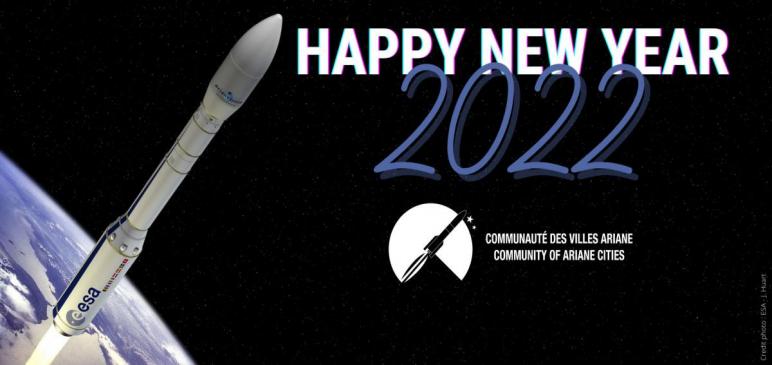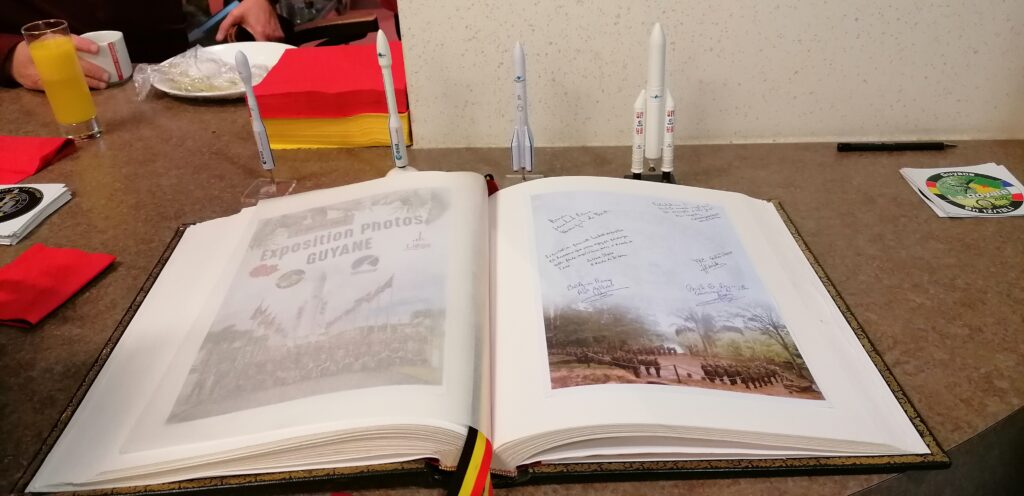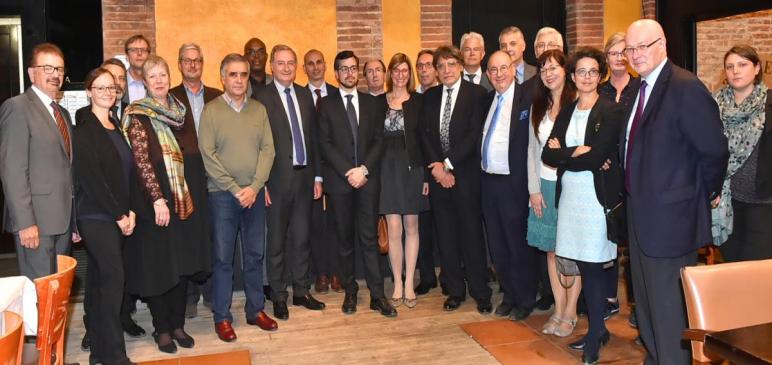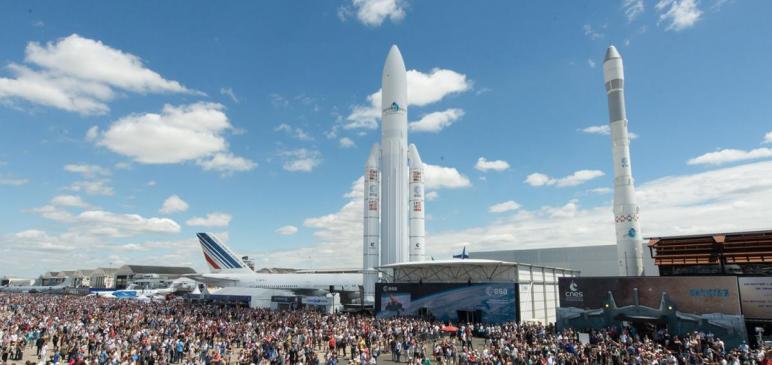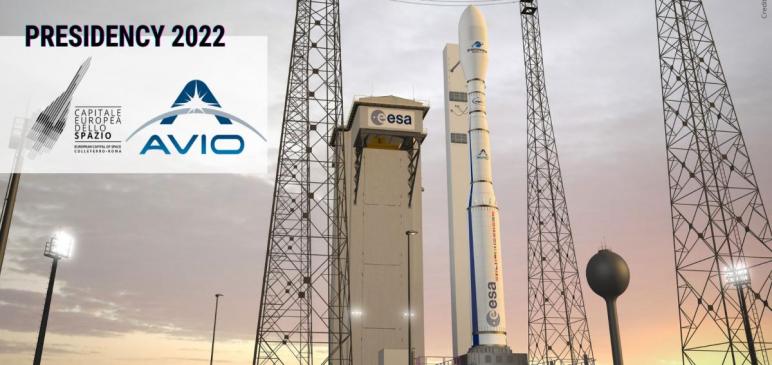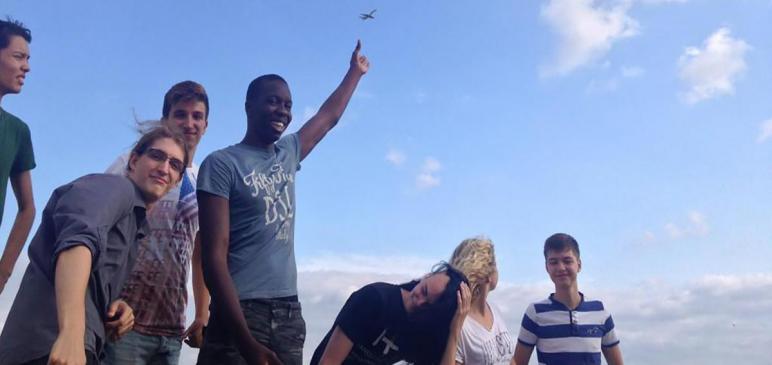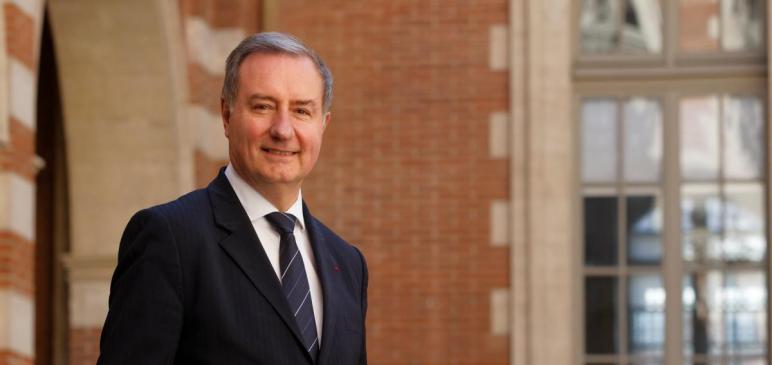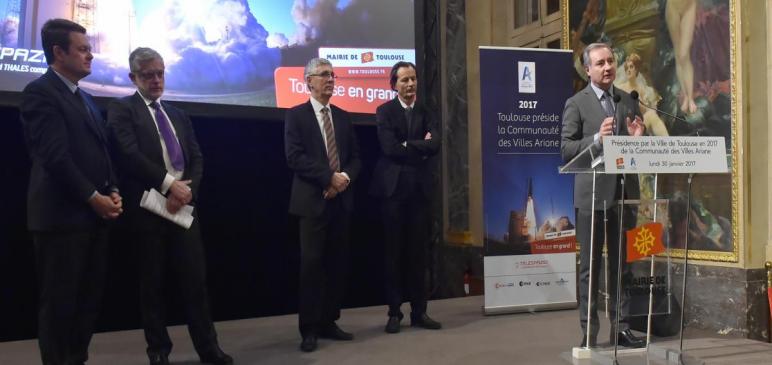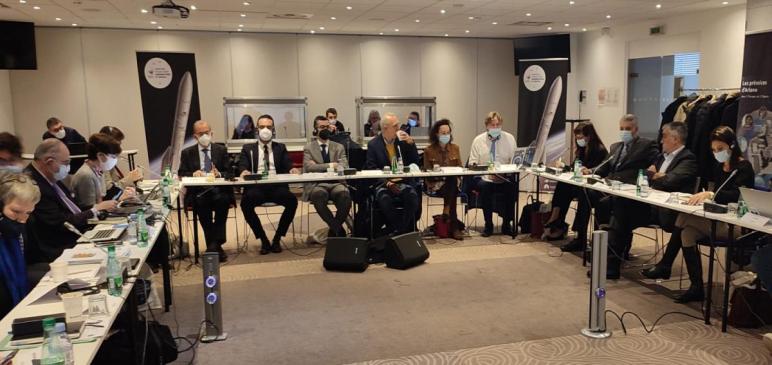From 13 to 20 November 2023, CVA alumni had the privilege of experiencing an exceptional adventure, a captivating immersion into the fascinating world of the Guiana Space Centre and French Guiana.

Day one: Discovering French Guiana
The excursion began with a meeting at the landing stage at “Camp des Maripas” PK18 (Saramaca river port) to board a pirogue and head up the Kourou river. After arriving at Camp Cariacou and enjoying a tasty local lunch, the afternoon’s activities included hiking, kayaking and swimming, giving participants the chance to experience total immersion in Guianese nature.

Day two: Road to the future at the CSG
The second day at the Guiana Space Centre was a captivating journey into the future, focusing on Ariane 6. The day began with two exciting presentations in the Jupiter room, offering a preview of the space horizons to come.
Continuing the visit by taking the road to space, the students discovered the fascinating details of a central part of Ariane 5, known for its first stage propelled by a mixture of cryogenic propellants based on liquid hydrogen and oxygen: Ariane 5’s cryogenic main stage.
Our visit then moved on to the S5 Payload Preparation Complex, a crucial area for positioning the supply ships to the ISS (International Space Station) and, above all, for the meticulous preparation of the satellites prior to their integration into the fairing. It is here that emblematic satellites such as James Webb have been assembled in highly specialised white rooms.
The day was enriched by the discovery of ESA’s network of tracking stations (estrack), a vital link between the satellites in space and the Operations Control Centre (OCC) on earth. The Alumni had the chance to take a close look at the Diane antenna, an essential part of the system.
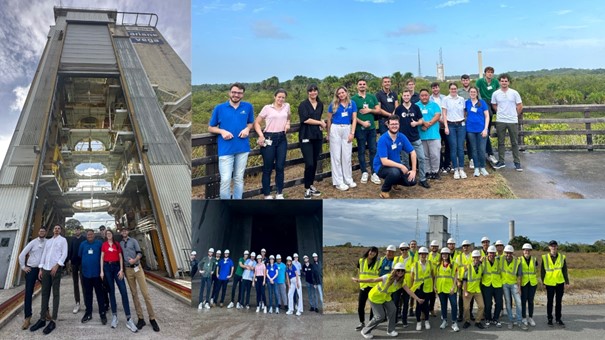
Day three: Exploring the Guiana Space Centre
The second day’s visit to the Guiana Space Centre began with a breathtaking view from the Montagne des Pères, where the students had the opportunity to observe the three iconic antennas. The atmosphere of space history and achievement was palpable as they explored a fascinating room showcasing each major launch. The champagne corks, testimony to the success of the Ariane and Vega missions, offered a visual perspective on the impressive number of flights made.
Visits to Launching Room 3, an area reserved for operations, and the Ariane 5 launch base were special moments, allowing students to experience the very heart of preparations for large-scale space missions.
The visit to the Ariane 5 launch base was an immersion in the history of European space exploration. The site is an important part of Europe’s space heritage, having been the site of many emblematic launches. Each lift-off from this base represents a major milestone in Europe’s technological and scientific development in space.
The students had the chance to walk on the ground of this base full of achievements and discoveries. They were able to feel the palpable excitement and energy that precedes each launch, and understand the scale of the effort put into each mission.
What’s more, a visit to the launch base of Vega, the Italian rocket, added an extra dimension to the experience. Vega, with its own unique characteristics and achievements, broadened the students’ horizons in terms of the diversity of space programmes and international collaboration in space exploration.
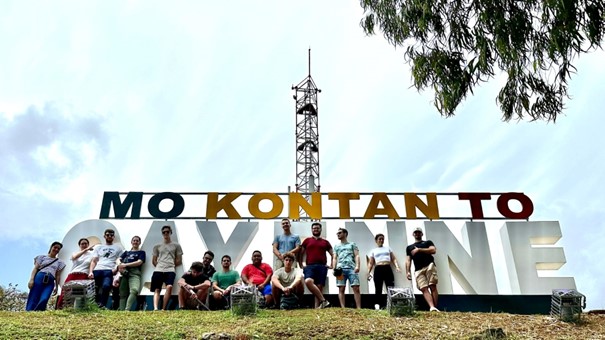
Fourth day: Discovering Cayenne and the Zoo
The following day offered the young engineers an authentic immersion in everyday life in Cayenne. A lively stroll through the local market was the perfect opportunity to discover the authentic crafts and flavours of the region, while searching for unique souvenirs to immortalise their stay. A pleasant walk through the heights of the city revealed the beauty of Cayenne, offering breathtaking views of this dynamic city and the surrounding countryside.
The afternoon was marked by an instructive visit to Cayenne Zoo, a veritable animal sanctuary that allowed the students to deepen their knowledge of the local fauna. This enriching experience gave them the opportunity to get up close to the region’s species, and to understand the conservation and awareness-raising efforts being made to protect the region’s biodiversity.
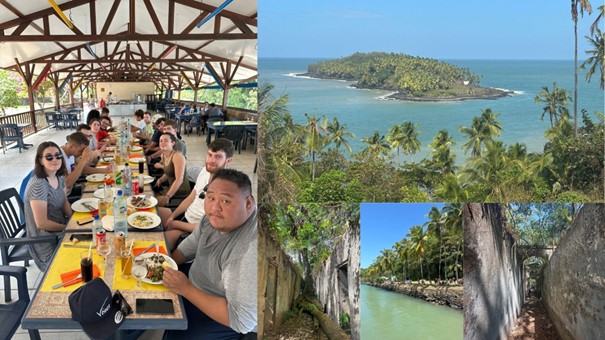
Day five : The Isles of Salut
At 7.45am, the meeting point at the Ponton des Balourous announced the start of an exciting day. Aboard Guyavoile’s catamaran, the navigation to Île du Diable offered a breathtaking view of this legendary archipelago. The students then discovered Île Royale, known for its remains of the penal colony from 1850 to 1947, home to a variety of wildlife: agoutis, monkeys, parrots, iguanas and turtles.
These islands are located a few miles off the coast of Kourou and in the path of the launchers. On Île Royale, the many penitentiary buildings have been restored by the CNES, which owns several of them, reflecting a prison system that was active until 1946. The students were able to visit historic sites such as the 19th-century prisoners’ hospital, the death row quarters, the church and many others. Some of the buildings, including the former guards’ quarters, have been restored to their original appearance and are now open to visitors. For example, the former guards’ dining room is now a restaurant offering a breathtaking view of Devil’s Island. This historic experience also revealed the importance of these islands, which are evacuated for each launch.
Ile du Salut is evacuated before every rocket launch from the Guiana Space Centre, highlighting its importance for space operations. The buffet lunch at the Auberge des îles, the main renovated building of the penal colony and property of CNES, was an opportunity for the students to immerse themselves in this unique historical atmosphere.
The visit demonstrated the importance of the Salvation Islands in European space history, combining the cultural richness, preserved nature and exceptional historical heritage of this region.
The following day’s return to Europe concluded an adventure that was as enriching as it was instructive for the CVA alumni. This experience was much more than a simple exploration of aerospace; it was a complete immersion combining professional knowledge and cultural discoveries. As we close this adventure, we would like to express our sincere thanks to the CSG family, in particular ESA, CNES, Arianegroup, Arianespace and Regulus, for making this unforgettable experience possible.
Watch the Youtube video of the trip: https://youtu.be/Xe0VTaW8hk4

